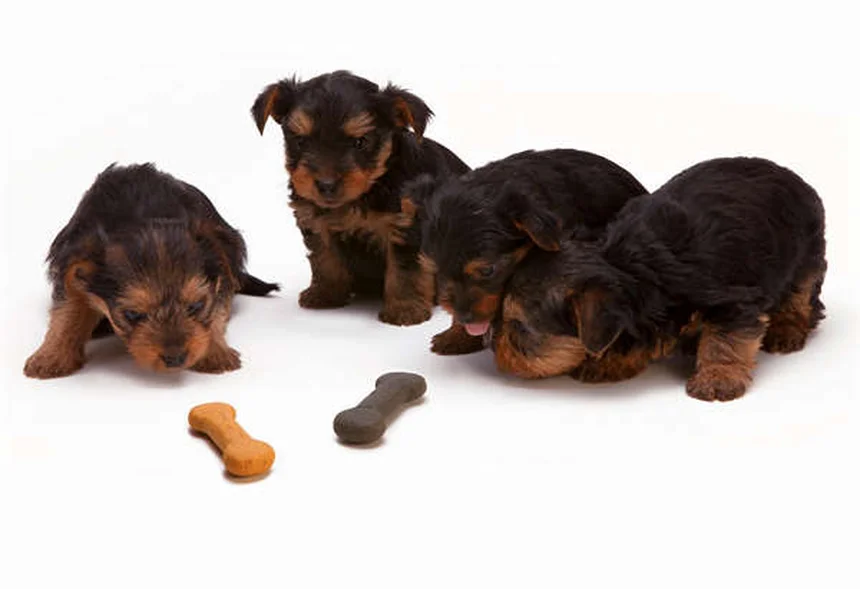Advertisement
Does your dog suffer from anxiety? The answer is: Yes, you can help your anxious dog feel calmer and more secure with the right approach. I've been through this with my own anxious pup Max, and let me tell you - those trembling episodes and destructive behaviors don't have to be permanent. Nearly 70% of dogs experience anxiety at some point, so you're definitely not alone in this struggle.Here's the good news: dog anxiety is manageable when you understand the signs and have practical solutions. In this guide, I'll share exactly what worked for Max and countless other dogs I've helped through my years of experience. We'll cover everything from recognizing subtle anxiety signals to creating a safe space your dog will love. Whether it's thunderstorms, separation anxiety, or general nervousness, you'll learn proven techniques to help your furry friend feel more at ease.
E.g. :Puppy Grooming 101: Essential Tips for Your New Best Friend
- 1、Spotting Anxiety in Your Furry Friend
- 2、Getting Professional Help
- 3、At-Home Anxiety Solutions
- 4、Advanced Anxiety Treatments
- 5、Medication Options
- 6、Preventing Anxiety Triggers
- 7、Long-Term Success
- 8、The Science Behind Canine Anxiety
- 9、Anxiety in Rescue Dogs
- 10、Anxiety Across Life Stages
- 11、Alternative Therapies Worth Trying
- 12、The Human-Dog Anxiety Connection
- 13、FAQs
Hey there fellow dog lover! If your pup gets anxious sometimes, you're not alone. Nearly 70% of dogs show signs of anxiety at some point in their lives. I've been through this with my own dog Max, and let me tell you - with patience and the right approach, things can get better!
Spotting Anxiety in Your Furry Friend
What Anxiety Looks Like
Dogs speak with their bodies, not words. My friend Ashley Atkinson, a certified behavior consultant, taught me that licking lips, yawning when not tired, or trembling can all be signs your pup is stressed.
Here's something interesting - did you know dogs show anxiety in ways we often miss? When Max gets nervous, he does this funny thing where he suddenly becomes very interested in sniffing the ground. Turns out this is a classic displacement behavior! Other signs include:
| Physical Signs | Behavioral Signs |
|---|---|
| Panting when not hot | Pacing back and forth |
| Dilated pupils | Avoiding eye contact |
| Excessive drooling | Hiding behind furniture |
When to Worry
Now, here's the thing - occasional nervousness is normal, but if your dog shows multiple signs regularly, it's time to act. I remember when Max started chewing his paws raw during thunderstorms - that's when I knew we needed professional help.
Getting Professional Help
 Photos provided by pixabay
Photos provided by pixabay
Your First Stop: The Vet
Before assuming it's just anxiety, always visit your vet first. Why? Because sometimes what looks like anxiety could actually be pain or illness. My vet found that Max's sudden fear of stairs was actually due to arthritis!
Vets can do complete checkups including blood tests to rule out medical causes. They might suggest:
- Basic blood work
- Thyroid testing
- Pain assessment
When to See a Specialist
If basic treatments don't help, your vet might recommend a veterinary behaviorist. These are like doggy psychiatrists with extra training. They helped Max overcome his fear of bicycles using special techniques.
At-Home Anxiety Solutions
Creating a Safe Space
Every anxious dog needs a "safe zone". For Max, it's a cozy crate with his favorite blanket and a white noise machine. Pro tip: Add an item with your scent to boost comfort!
Here's a funny story - when we first set up Max's safe space, he ignored it completely. Then one day during a storm, he bolted straight for it! Now it's his go-to spot when the vacuum cleaner comes out.
 Photos provided by pixabay
Photos provided by pixabay
Your First Stop: The Vet
You know how a good workout makes you feel better? Same for dogs! Regular exercise reduces anxiety hormones. For Max, we do:
- Morning fetch sessions
- Evening sniff walks (let them explore smells!)
- Weekend hiking adventures
Advanced Anxiety Treatments
Pheromone Products
These synthetic versions of mom-dog calming scents can work wonders. We tried a pheromone collar for Max's car anxiety - it helped reduce his drooling by about 50%!
Available forms include:
- Diffusers (great for home use)
- Sprays (good for travel)
- Collars (continuous protection)
Behavior Modification Training
This is where we teach dogs new emotional responses. For Max's fear of loud noises, we started by playing storm sounds at low volume while giving treats, gradually increasing the volume.
Key principles:
- Go at your dog's pace
- Always end on a positive note
- Keep sessions short and sweet
Medication Options
 Photos provided by pixabay
Photos provided by pixabay
Your First Stop: The Vet
Here's a question many owners ask: "Will medication change my dog's personality?" The answer is no - when properly prescribed, meds just take the edge off anxiety while letting your dog's true self shine through.
Common medications include:
- Fluoxetine (Prozac®)
- Sertraline (Zoloft®)
- Trazodone (for situational anxiety)
Monitoring Medication Effects
With Max, we kept a daily journal tracking his behavior, appetite, and energy levels. This helped our vet fine-tune his dosage. Most dogs show improvement within 4-6 weeks.
Preventing Anxiety Triggers
Know Your Dog's Limits
Another common question: "Should I force my anxious dog to face their fears?" Actually, this often backfires! It's better to gradually expose them while keeping stress levels manageable.
For example, if your dog fears other dogs:
- Start by watching dogs from a distance
- Gradually decrease distance over weeks
- Always let your dog set the pace
Routine is Key
Anxious dogs thrive on predictability. We keep Max's schedule consistent with:
- Regular feeding times
- Scheduled potty breaks
- Predictable walk routes
Long-Term Success
Celebrating Small Wins
Progress might be slow, but celebrate every victory! When Max finally took a treat during a mild thunderstorm, we threw him a little party (okay, extra belly rubs and his favorite toy).
Remember - what works for one dog might not work for another. Be patient and keep trying different approaches until you find what helps your pup.
Building Confidence
Confidence-building activities can work wonders. We do:
- Treasure hunts (hide treats around the house)
- Obedience training (mastering commands builds confidence)
- Agility exercises (start simple!)
At the end of the day, helping an anxious dog is a journey. There might be setbacks, but with love, patience and the right approach, you can help your furry friend feel safer and happier in their world.
The Science Behind Canine Anxiety
What's Happening in Their Brains
Ever wonder why some dogs seem more anxious than others? Research shows that anxious dogs actually process threats differently in their brains. The amygdala - that's the fear center - becomes hyperactive while the prefrontal cortex (responsible for rational thinking) underperforms.
Here's a fascinating fact: dogs can inherit anxiety tendencies from their parents, just like humans. But environment plays a huge role too. A study at Tufts University found that puppies who experienced trauma before 14 weeks old were three times more likely to develop chronic anxiety.
Breed-Specific Tendencies
Did you know certain breeds are genetically predisposed to anxiety? Working breeds like German Shepherds often develop anxiety when they don't get enough mental stimulation. Meanwhile, companion breeds like Chihuahuas tend to be more sensitive to environmental changes.
Check out this interesting comparison:
| Breed Type | Common Anxiety Triggers | Best Management Approach |
|---|---|---|
| Working Dogs | Lack of job/purpose | Task-based activities |
| Toy Breeds | Loud noises, strangers | Safe spaces, gradual socialization |
| Hunting Dogs | Confinement, inactivity | Scent games, long walks |
Anxiety in Rescue Dogs
The Special Challenges They Face
Rescue dogs often come with extra baggage - and I don't mean their cute little travel carriers! Many have experienced abandonment, neglect, or even abuse. My neighbor's rescue Lab, Buddy, spent his first month with them hiding under the bed whenever anyone raised their voice.
Why do rescue dogs take longer to adjust? It's because their brains have literally rewired to be on high alert. The good news? With time and patience, most can learn to feel safe again. Buddy now greets everyone with enthusiastic tail wags!
Building Trust From Scratch
When working with rescues, we need to go extra slow. The 3-3-3 rule is golden here: 3 days to decompress, 3 weeks to learn routines, and 3 months to feel at home. During those first days, I recommend:
- Limited visitors
- Quiet environment
- No forced interactions
Anxiety Across Life Stages
Puppy Anxiety
Puppies aren't just cute - they're little anxiety sponges! The critical socialization window between 3-14 weeks is when they learn what's safe in the world. Miss this period, and you might have a fearful adult dog.
Here's a pro tip: socialization isn't about meeting every person and dog. It's about positive exposures to various stimuli. A well-socialized puppy should experience:
- Different surfaces (grass, tile, gravel)
- Various sounds (traffic, appliances, voices)
- Novel objects (umbrellas, bikes, hats)
Senior Dog Anxiety
As dogs age, their world can become scarier. Declining vision, hearing loss, and cognitive changes all contribute. My 12-year-old Beagle started getting anxious at night until we added night lights and kept a consistent bedtime routine.
Common signs of cognitive decline include:
- Pacing at night
- Getting "stuck" in corners
- Increased vocalization
Alternative Therapies Worth Trying
Canine Massage Therapy
You know how a good massage melts your stress away? Dogs benefit too! Certified canine massage therapists use specific techniques to:
- Lower cortisol levels
- Increase feel-good endorphins
- Improve body awareness
I tried this with Max after his arthritis diagnosis. Not only did it help his joints, but his general anxiety levels dropped noticeably after just three sessions.
Music Therapy for Dogs
Here's something cool - studies show dogs prefer soft rock and reggae! Specially composed dog music with slow tempos and simple melodies can reduce anxiety by up to 70% in kennel environments.
When leaving Max home alone, I always put on his favorite canine relaxation playlist. The difference in his greeting behavior when I return tells me it works!
The Human-Dog Anxiety Connection
How Our Stress Affects Them
Dogs are emotional sponges - they pick up on our energy. Ever notice your dog acting anxious when you're stressed? Research confirms dogs can smell human stress hormones through our sweat!
This creates a vicious cycle: we stress about our dog's anxiety, which makes them more anxious, which stresses us more. Breaking this cycle starts with managing our own emotions through:
- Deep breathing exercises
- Positive self-talk
- Taking breaks when needed
Setting Realistic Expectations
We often expect dogs to handle situations that would stress any human. Crowded dog parks, loud parties, or busy streets - these can overwhelm even confident dogs. I learned this the hard way when I took Max to a Fourth of July fireworks display (big mistake!).
Instead, we should:
- Respect our dog's limits
- Provide quiet alternatives
- Celebrate small victories
Remember, helping an anxious dog isn't about achieving perfection - it's about making their world feel safer, one step at a time. And trust me, the journey is worth every tail wag of progress!
E.g. :Expert Tips on How to Calm an Anxious Dog, Soothe Dog Anxiety
FAQs
Q: How can I tell if my dog has anxiety or is just scared?
A: Great question! Many dog owners struggle with this distinction. The key difference is frequency and intensity. Occasional fear (like during a loud thunderstorm) is normal, while chronic anxiety appears more regularly and affects your dog's daily life. Look for patterns - does your dog show stress signs multiple times a week? Do they avoid certain situations consistently? With Max, I noticed he'd pant and pace not just during storms, but whenever he heard similar rumbling sounds. That's when I realized it was anxiety, not just temporary fear. Other red flags include destructive behavior when alone, excessive licking/grooming, or changes in appetite.
Q: What's the fastest way to calm my anxious dog during a panic episode?
A: When your dog is mid-panic, here's what works best based on my experience: First, stay calm yourself - dogs pick up on our energy. Then try these steps: 1) Lead them to their safe space (more on creating this later), 2) Use calming pheromone sprays or a thunder shirt, 3) Offer high-value treats in a calm voice, 4) Play white noise or soft music to mask triggering sounds. For Max, I keep a special "calm kit" with these items ready at all times. Remember - don't coddle anxious behavior, but do reward calm moments. The goal is to help them through the episode while reinforcing that they're safe.
Q: Are anxiety medications safe for dogs long-term?
A: This was my biggest concern too! After consulting multiple vets and behaviorists, here's what I learned: When properly prescribed and monitored, anxiety meds can be safe and life-changing for dogs with severe anxiety. They're typically used in combination with behavior modification. Modern medications like fluoxetine (Prozac®) have been extensively studied in dogs. The key is working with a vet who will: 1) Start with the lowest effective dose, 2) Monitor for side effects, 3) Regularly assess if meds are still needed. For Max, we used meds temporarily during his most anxious phase, then gradually weaned off as his behavior improved through training.
Q: Can I train my dog to overcome anxiety without professional help?
A: While mild cases might improve with dedicated at-home training, I strongly recommend professional guidance for moderate to severe anxiety. Here's why: Anxiety often worsens without proper intervention, and well-meaning owners can accidentally reinforce fearful behaviors. A certified behaviorist can create a customized plan addressing your dog's specific triggers. That said, there are many effective techniques you can start at home, like desensitization training (gradually exposing your dog to triggers at low intensity) and confidence-building exercises. With Max, we saw the best results combining professional guidance with daily at-home practice.
Q: How long does it take to see improvement in an anxious dog?
A: Patience is key! Most dogs show some improvement within 2-4 weeks of consistent intervention, but significant change typically takes 3-6 months. In Max's case, we noticed small victories first - he'd recover faster from scary sounds, then the reactions became less intense, until eventually he'd just glance at the noise and go back to sleep. Track progress through a journal noting: frequency of anxious episodes, recovery time, and any new positive behaviors. Celebrate every small win! Remember that anxiety management is often a lifelong process, but the effort pays off in your dog's quality of life.







